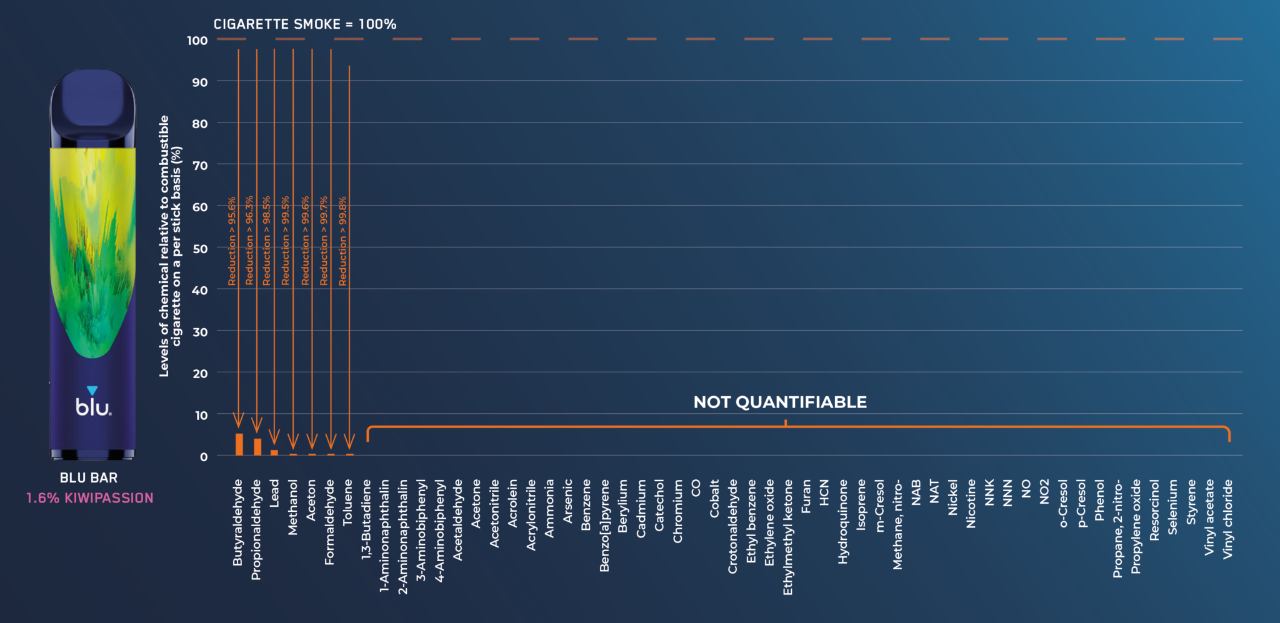Allergic reactions to e-cigarettes can stem from various components, making direct brand-to-brand safety comparisons complex. While Blu utilizes common ingredients found across the industry, specific formulations and user sensitivities are key factors.
Common Allergenic Components in E-Cigarettes
- Propylene Glycol (PG): A frequent base liquid component. PG allergies, while relatively uncommon, manifest as respiratory irritation, skin rashes, or oral discomfort. Blu liquids typically contain PG.
- Vegetable Glycerin (VG): The other primary base liquid. VG allergies are rarer than PG allergies but can cause similar symptoms.
- Flavorings: The most diverse and common source of reactions. Compounds like diacetyl (now mostly avoided), cinnamaldehyde (found in cinnamon flavors), and various aldehydes, esters, or natural extracts can trigger respiratory or dermal irritation or sensitivities. All brands utilize numerous flavor compounds.
- Nickel & Chromium: Leached from coil heating elements during use, especially if degraded. Nickel allergy is common and can cause “vaper’s tongue” (taste loss) or throat irritation.
- Other Metallic Particles/Solvents: Potential contaminants from manufacturing processes.
Blu vs. Other Brands: Nuances in Allergy Risk
- Ingredient Transparency: Blu, like most major brands, discloses base liquids (PG/VG ratios) and nicotine content. Specific flavoring components remain largely proprietary industry-wide, hindering definitive allergen identification regardless of brand.
- PG/VG Ratio: Historically, Blu favored higher PG ratios (common for “tobacco-like” draw). Higher PG content may increase risk for individuals with known PG sensitivities. Many modern competitors offer higher VG options, potentially better for PG-sensitive users. Check individual product specs.
- Coil Composition: Blu devices use common coil materials (nicrome, kanthal). The risk of nickel leaching exists similarly across brands using standard metal alloys unless explicitly using nickel-free alternatives (less common).
- Manufacturing Standards: Reputable brands like Blu, adhering to regional regulations, generally have stricter quality control than unknown manufacturers or counterfeit products. This may reduce the risk of contamination-related reactions, but doesn’t eliminate risk from core ingredients.
Is Blu Safer for Allergies?
There is no conclusive evidence indicating Blu is inherently safer concerning allergic reactions compared to other established brands using similar formulations and materials. Key considerations:

- Sensitivity is Individual: An individual may react to a specific Blu flavor or coil but tolerate another brand, or vice versa.
- PG Prevalence: If a user has a confirmed PG sensitivity, Blu’s traditional PG focus could pose a higher risk than brands/formulations with higher VG or PG-free alternatives.
- Flavor Specificity: Reactions are often tied to specific flavor chemicals, not the brand itself. A user might react to a “Berry” flavor from Blu but not from another brand due to different flavor blends.
- Lack of Comparative Data: Robust studies directly comparing allergic reaction rates between specific brands like Blu and its competitors are currently lacking.
Practical Recommendations for Users
- Identify Triggers: Track symptoms and specific e-liquids/devices used. Switch components methodically (base ratio, flavor profile, coil type) under medical guidance if needed.
- Patch Testing (Caution): While impractical for inhalation, applying a tiny amount of e-liquid to the skin under medical supervision might indicate dermal sensitivity.
- Prioritize Simpler Flavors: Tobacco or menthol flavors often contain fewer complex compounds than dessert/candy flavors, potentially lowering risk.
- Medical Consultation is Crucial: Suspected e-cigarette allergies warrant consultation with an allergist or pulmonologist for diagnosis and management.









